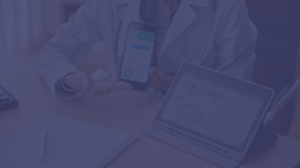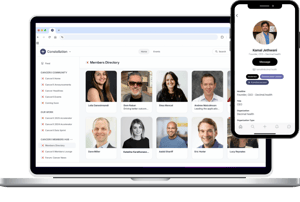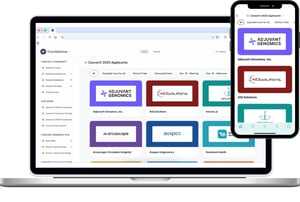
The Growth of Remote Patient Monitoring and Therapeutic Monitoring
Remote Patient Monitoring (RPM) continues to transform healthcare delivery, creating new opportunities for providers and improved outcomes for patients.
The global remote patient monitoring market is experiencing remarkable growth, with analysts projecting it could reach nearly $90 billion within the next decade. This explosive expansion isn't surprising when you consider how RPM technology has evolved to meet healthcare needs. With expected compound annual growth rates hovering between 18-25%, depending on which market analysis you consult, we're witnessing nothing short of a revolution in how patient care is delivered.
The United States stands at the forefront of this transformation, holding over 40% of the global RPM market share. This dominance makes sense given the American healthcare landscape, with its high prevalence of chronic conditions and increasing comfort with digital health solutions. What's particularly exciting is how this technology is becoming mainstream – market researchers predict that more than one in four Americans will soon be using some type of remote monitoring service, with global adoption approaching 115 million patients in the coming years.
Yet despite this impressive trajectory, we've only scratched the surface of RPM's potential. The percentage of Medicare beneficiaries using these services remains relatively low, though usage has increased more than sixfold in recent years. This rapid acceleration tells us something important: once providers begin implementing these systems, they tend to expand their use quickly, recognizing the value they bring to patient care.
While RPM has established itself in the healthcare ecosystem, a newer innovation is gaining traction: Remote Therapeutic Monitoring (RTM). RTM takes a different approach by tracking a patient's health status and treatment progress remotely, focusing specifically on non-physiological data like treatment adherence, pain levels, and mental health conditions. Where RPM monitors vital signs and physical measurements, RTM looks at how patients are responding to treatments, particularly in areas like musculoskeletal care, respiratory conditions, and behavioral therapy. This distinction opens doors for different healthcare specialties to engage with remote monitoring in ways previously unavailable.
The adoption story among healthcare professionals reveals interesting patterns. From examining billing records, we know that approximately 50,000 unique Qualified Health Professionals across 19,000 healthcare organizations have billed for RPM codes, with nearly two-thirds of them starting during the pandemic. Primary care providers lead the charge, while specialists in cardiology, nephrology, gastroenterology, and psychiatry have increasingly embraced these technologies.
However, these numbers represent just a tiny fraction of potential users – over one million eligible healthcare professionals in the US could be billing for RPM, but most haven't yet integrated these codes into their practice. In practical terms, only about 8,000 providers bill for RPM monthly, representing less than 1% of those eligible. From the patient perspective, though billing for RPM services has seen modest growth in terms of patient numbers, the volume of specific services has surged dramatically, with some codes seeing increases from under 200,000 claims to nearly 500,000 in a single year.
The RTM landscape is following its own growth pattern. These codes capture therapy response and adherence data related to musculoskeletal, cognitive behavioral, and respiratory treatments. Many digital health companies are retrofitting their existing products to leverage these newer codes, allowing providers like physical therapy clinics to assign home-exercise programs, track patient progress, and offer management services remotely.
The pandemic has been a powerful catalyst for remote monitoring adoption, as patients sought to reduce infection risk through virtual care options and providers looked for ways to maintain continuity of care while minimizing in-person visits. Regulatory changes supporting telehealth reimbursement further accelerated this trend. Looking ahead, the telerehabilitation market specifically is poised for substantial growth, potentially reaching nearly $13 billion within the decade as these technologies become more sophisticated and widely accepted.
The world of Digital Therapeutics (DTx) intersects with these monitoring technologies in important ways. No, DTx is not dead, but it is navigating a challenging period of reassessment. While notable companies like Pear Therapeutics have faced setbacks, others are finding success through new reimbursement pathways and strategic partnerships. The industry faces hurdles with insurance coverage, provider awareness, and demonstrating clinical effectiveness, but isn't in decline so much as evolution.
DTx companies struggle with getting insurance coverage and building awareness among healthcare professionals and patients. Some have faced difficulty proving their products' effectiveness through rigorous clinical validation. We've seen high-profile challenges, including Pear Therapeutics' bankruptcy and Virtual Therapeutics acquiring Akili at a significantly reduced valuation.
Yet innovation continues. Forward-thinking companies are exploring alternative approaches, such as partnering directly with employers or integrating with established healthcare platforms – Big Health's collaboration with Grow Therapy to increase mental health DTx access serves as one promising example. The sector continues to evolve, with long-term success depending on solving reimbursement challenges, increasing awareness, and demonstrating improved clinical outcomes.
Many DTx solutions incorporate RPM capabilities to collect both physiological and therapeutic data as part of their offerings. This integration helps drive adoption of digital health tools broadly and supports the shift toward decentralized, continuous connected care models.
As one pulmonologist from a large Academic Medical Center on the East Coast expressed: "It is wonderful to have a mechanism to value my team's time spent on reviewing data coming from these devices. For complex patients with high ongoing needs, it helps my team collect relevant objective data and monitor it over time, as opposed to addressing issues over the phone with patients without any real data to back it up. For the longest time, it has been hard for us to get reimbursed for phone calls—so RPM codes are a huge improvement."
Healthcare organizations often lack expertise in implementing DTx and RPM programs effectively. Companies working in this space should prioritize supporting the adoption process rather than simply providing technology. Those pursuing digital therapeutics must address real market needs, generate convincing clinical and economic evidence, support implementation, and develop business models that don't rely exclusively on RPM/RTM codes for sustainability.
SCHEDULE A MEETING WITH AN EXPERT
Ready to innovate? Decimal Health is standing by to assist with your next Digital Health venture.
.png?width=125&height=125&name=logo_wt%20(3).png)






.png?width=300&name=CancerX%20Decimal%20Banner%20(2).png)